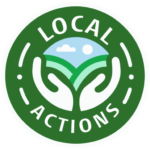Framing and Climate Change
- Instructor Prep: 2 hours | Seminar: 1-2 class slots
- Keywords: Agenda-setting | Audiences | Perception

INTRODUCTION
This teaching guide is meant to allow for easy integration of the topic of climate change into existing classes in Media and Communication Studies. It aims to help teachers and professors interested in including environmental issues in their courses to link them as examples into core content. This guide uses the topic of Climate Change Communication to aid students in understanding the concept of Framing Theory.
LEARNING OUTCOMES
- Students should be able to explain how frames shape the perception of the public
- Learners can identify the frames used in climate change reporting
- Students can self-reflect on the framing that they use in their climate communication
FRAMING THEORY
The main Media and Communication Studies concept for this teaching guide is Framing Theory. Being an essential introductory concept for media studies, it’s a good place to introduce a class on sustainability. Framing theory suggests that the presentation of information to an audience, known as ‘the frame,’ exerts a significant influence on individuals’ decision-making processes regarding the information they receive. Frames serve as abstract constructs that structure and organise the meaning of a message. The most prevalent application of framing theory occurs in the context of how news outlets or media entities present information. Such frames can shape the audience’s perception of the news, essentially functioning as a form of second-level agenda-setting. As such, they not only dictate what topics the audience should focus on, as per agenda-setting theory, but can also guide how the audience should think about those issues.
The main framing techniques as identified by Fairhurst and Sarr (1996) are: Metaphors, Stories (myths, legends), Tradition (rituals, ceremonies), Slogan (jargon, catchphrase), Artifacts, Contrast and Spins. All these techniques can be used in the Local Action exercise below.
CLIMATE CHANGE
The main sustainability concept for this teaching guide is Climate Change. Climate Change refers to long-term shifts in the typical weather patterns that characterise Earth’s local, regional, and global climates. These changes, which encompass a wide range of observed effects, are driven primarily by human activities, particularly the burning of fossil fuels. This action increases the levels of heat-trapping greenhouse gases in our atmosphere, resulting in a rise in Earth’s average surface temperature. Natural processes, such as El Niño circulations also play a role but are much smaller than human driven climate change.
Scientists use observations from ground-based, airborne, and space-based platforms, in combination with computer models, to monitor and analyze past, present, and future climate changes. The result is a clear picture of different climatic changes from rising global land and ocean temperatures, to increasing sea levels and extreme weather. Climate change impacts many areas of our lives including health, food production, housing, safety, and employment. Climate Change is the biggest challenge of our and future generations.
For ease, we have developed several videos that provide basic information on these issues which can be assigned to students. These videos explain the following:
Local Actions Videos
CONNECTING THE DOTS
Climate change communication is often focussed on effectively reaching people to inform and engage people to change attitude or behaviour. Two common framings that aim to drive change are hope and fear. There are many debates about the efficacy of such approaches. Fear framing can be seen as desirable to push people to action, yet it may also be disabling and lead to an apathy of ‘there is nothing I can do’. Conversely hope could be important in helping push people towards a better vision for the future, yet it may mislead the public about the possibilities available.
Common opposing words used in fear/hope framing include benefits and gains, or progress.
Some studies on climate change communication find that gain frames are more effective in encouraging mitigation behaviors. This is because the concept of mitigation can be explained as a behaviour that prevents with very low risk.
LOCAL ACTION AND IN CLASS ACTIVITES
- In this local action you will think of a contrasting communication strategy to communicate about climate change. This can be a text, a visual, a social media post or a poster.
- First, go online and find some examples on climate change communication, and identify what frames were used. Was this hope or fear framing?
- Next, decide on your own strategy: will you use equivalence or emphasis framing? Then develop a strategy to develop your hope and fear framing.
- Next, show this to some friends or classmates. Discuss with them which they think is the most effective communication strategy.
- Finally, fine-tune your favorite approach, and share it (post it on social media, print it and hang it on a bulletin board, or share it with friends and family).
- In groups, search for a climate opinion article online (not a news article on a specific climate event). Many articles that examine climate futures will have a specific frame. A good example of fear framing is The Uninhabitable Earth by David Wallace Wells. and a good example of hope framing is Hope amid climate chaos: ‘We are in a race between Armageddon and awesome’ by Damian Carrington. And something in between such as Paul Thorton’s The climate future is bleak. How scientists give their children hope without lying.
- Examine the words that are used in each framing.
- Explore the similarities and differences between these framings as groups, discussing their findings.
RESOURCES
The skeptical scientist analyses and rebuts many of the myths commonly held about climate change using climate science: https://skepticalscience.com/argument.php
The most relevant literature on Framing Theory connecting to climate change is Fairhurst, Gail T. and Sarr, Robert A. 1996. The Art of Framing: Managing the Language of Leadership. Jossey-Bass, Inc.





